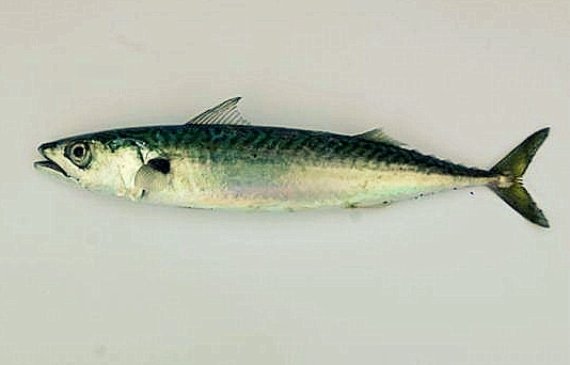© Peter van der Sluijs
This is the conclusion of master’s student Enya Hermsen in an article published in the Marine Pollution Bulletin. This piece contains a report on the research into the occurrence of plastic in 400 fish that were caught in the North Sea. These were herrings, sprats, dabs and whiting. The fish were studied according to a new protocol, in which the emphasis lay on a clean way of working.
Negligible
Only one of the fish, a sprat, had plastic in it: two little pieces (< 0.4 mm) of acrylic in its intestines. That amount is almost negligible. This result is in stark contrast to earlier measurements of ingestion of plastic by fish. ‘The coverage on plastic in oceans is often alarming’, acknowledges Bart Koelmans, supervisor and professor in Water and Sediment Quality. ‘The attention for plastic in the oceans is justified, but the question is whether these reports are all correct.’
According to Koelmans, the measurements in many of the prior studies were not good enough yet, which could cause the samples to get contaminated. ‘We have developed a protocol with a high focus on hygiene during the measurements. We work in a clean-air cabinet, which blows filtered air towards you. This means the sample does not come into contact with the air in the lab. Many of the tools in a lab are made of plastic and the air is filled with textile fibres; this causes a high probability of contamination in a normal laboratory.’
We have developed a protocol with a high focus on hygiene during the measurements
Bart Koelmans
Further steps taken to prevent contamination included the wear of special clothing instead of normal lab coats. ‘In addition, we have also worked with many blanks and positive controls – added pieces of plastic that are meant to validate the method.’ According to Koelmans, all these precautions are relatively new in this kind of measurements. There is no set protocol yet to demonstrate contamination with microplastics. ‘This was also one of the main reasons to perform this study.’
Standard protocol
The results of Koelmans’ group confirm, among others, one of their own studies dating from 2013. At the time, less than three percent of the 1203 fish from the North Sea that were analysed were found to contain plastic. However, these low numbers do not imply that the North Sea is any less polluted than thought. Koelmans: ‘Itac means that we do not yet fully understand the relation between the concentration of plastic in the water and its ingestion by fish.’
Hermsen and Koelmans think that their method might be a good starting point for a standard protocol to measure amounts of plastics in fish. Koelmans: ‘In a general sense, with regard to clean work, the use of blanks and positive controls. But for use in terms of legislation, it needs to be even more accurate. We are currently writing a paper on how to rate measuring methods using a score system. This would make it possible to rate studies on plastics in fish based on reliability.’

